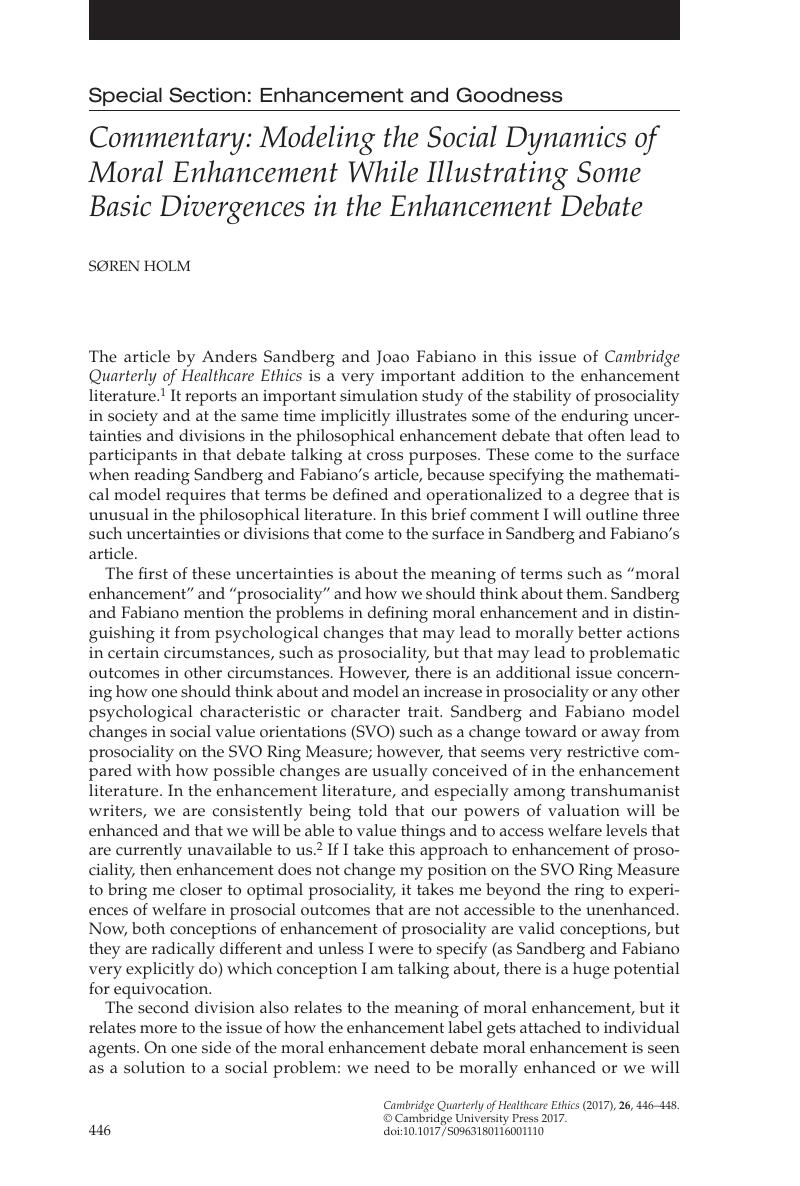No CrossRef data available.
Published online by Cambridge University Press: 25 May 2017

1. Fabiano J, Sandberg A. Modelling the social dynamics of moral enhancement: social strategies sold over-the-counter and the stability of society. Cambridge Quarterly of Healthcare Ethics This issue
2. Bostrom, N. Letter from Utopia. Journal of Evolution and Technology 2008; 19(1):67–72.Google Scholar
3. Persson, I, Savulescu, J. Unfit for the Future: The Need for Moral Enhancement. Oxford: Oxford University Press; 2012.CrossRefGoogle Scholar
4. Harris, J. How to be Good. Oxford: Oxford University Press; 2016.CrossRefGoogle Scholar
5. There may be inherent inequalities in the game played in each encounter, but because position in the game is randomly allocated, this does not lead to systematic differences in power.
6. Bostrom, N. Superintelligence: Paths, Dangers, Strategies. Oxford: Oxford University Press; 2014.Google Scholar
7. Holm S Naturalness and anthropology in modern bioethics, with a special view to trans- and post-humanism. In: Kragh H, ed. Theology and Science - Issues for Future Dialogue. Aarhus: University of Aarhus; 2007:17–29.
8. Holm S. Evaluating the posthuman future–some philosophical problems. European Review 2016;1–9.